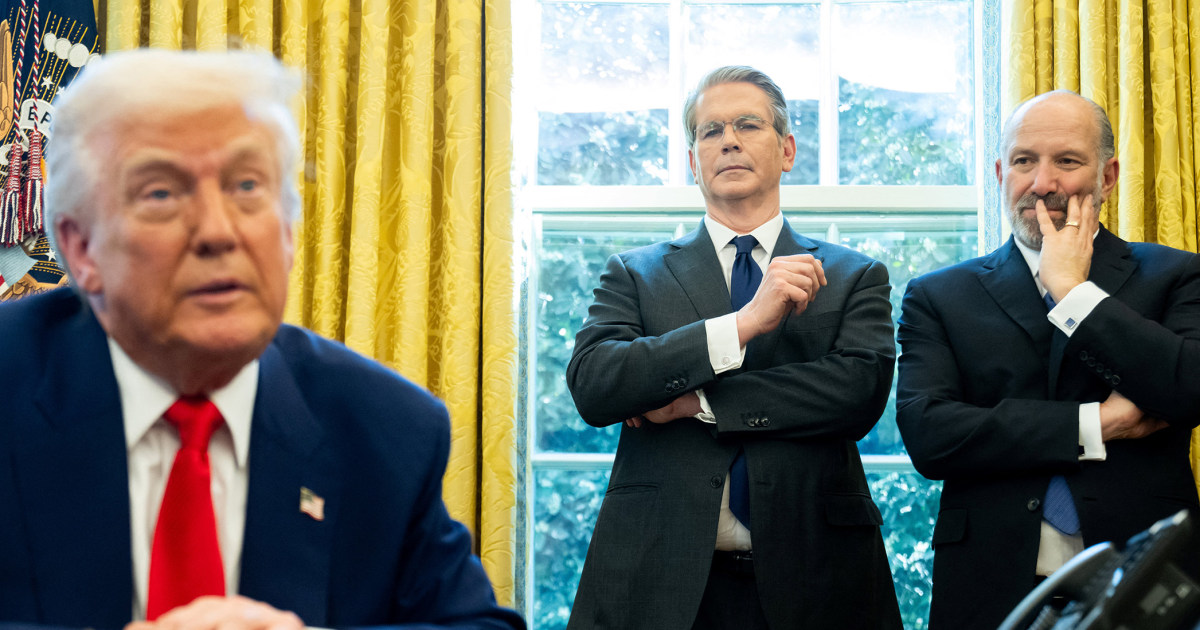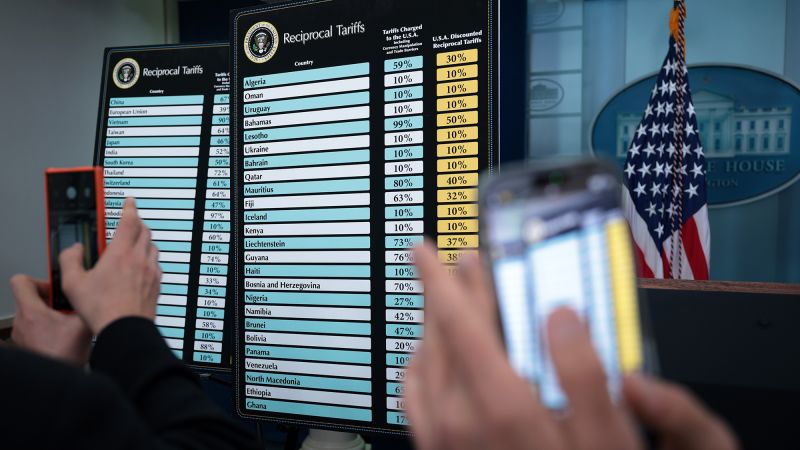President Trump Imposes 35% Tariff on Canada

Introduction
In a recent statement, President Trump affirmed that the global baseline tariff rates will remain at 10%, while Canada's tariffs are set to increase to 35%. This comes as a part of the United States' decision to impose sweeping reciprocal tariffs on several nations, which are set to take effect tomorrow.
Impact on Global Trade
This move by the US government is expected to have a significant impact on global trade, with many countries expressing concern and preparing for potential economic consequences. The 35% tariff on Canadian imports will hit industries such as steel and aluminum particularly hard, as Canada is the largest supplier of these materials to the US.
Possible Repercussions
The decision to increase tariffs on Canada also raises questions about the future of the North American Free Trade Agreement (NAFTA). Canada, along with Mexico, is a key partner in NAFTA, and this move by the US could potentially strain the trade agreement. Additionally, it may lead to retaliatory tariffs from Canada, further complicating trade relations between the two countries.
About the People Mentioned
Donald Trump
Donald John Trump, born June 14, 1946, in Queens, New York, is an American businessman, media personality, and politician. He graduated from the University of Pennsylvania’s Wharton School in 1968 with a degree in economics. In 1971, he took over his family’s real estate business, renaming it the Trump Organization, through which he expanded into building and managing skyscrapers, hotels, casinos, and golf courses. Trump gained widespread fame as the host of the reality TV show *The Apprentice* from 2004 to 2015, which helped establish his public persona as a successful entrepreneur. Trump entered politics as a Republican and was elected the 45th president of the United States, serving from 2017 to 2021. His presidency was marked by significant policy actions including tax cuts, deregulation, the appointment of three Supreme Court justices, renegotiation of trade agreements (notably replacing NAFTA with the USMCA), and a focus on immigration control including border wall expansion. He withdrew the U.S. from international agreements such as the Paris Climate Accord and the Iran nuclear deal, and engaged in a trade war with China. His administration’s response to the COVID-19 pandemic was criticized for downplaying the virus’s severity. Trump was impeached twice by the House of Representatives—first in 2019 for abuse of power and obstruction, and again in 2021 for incitement of insurrection—but was acquitted by the Senate both times. After losing the 2020 election to Joe Biden, Trump challenged the results, culminating in the January 6, 2021, Capitol riot. He remains a central figure in American politics, having won the 2024 presidential election and returned as the 47th president in 2025, continuing to promote policies aimed at economic growth, border security, and military strength[1][2][3][4].
About the Organizations Mentioned
North American Free Trade Agreement
The **North American Free Trade Agreement (NAFTA)** was a landmark trade pact signed in 1992 by **Canada, Mexico, and the United States**, forming one of the largest free-trade blocs globally by GDP. It came into force on January 1, 1994, aiming to gradually eliminate tariffs and other trade barriers on goods and services crossing the three countries' borders, thereby fostering economic integration across North America[1][2]. NAFTA's origins trace back to U.S. President Ronald Reagan's 1980 campaign proposal for a North American free trade zone and were further shaped by the 1988 Canada-U.S. Free Trade Agreement. Negotiated by the administrations of George H.W. Bush (U.S.), Brian Mulroney (Canada), and Carlos Salinas de Gortari (Mexico), NAFTA expanded the Canada-U.S. free trade framework to include Mexico, promoting increased trade and investment opportunities across diverse sectors[1][4]. Key achievements of NAFTA include the removal of tariffs that were as high as 30% on U.S. goods entering Mexico, facilitating duty-free access for products and services such as manufacturing, engineering, healthcare, and consulting. It standardized health, safety, and industry regulations to reduce non-tariff barriers, streamlined border processing to decrease clearance times, and imposed penalties for customs violations[7]. NAFTA helped boost trade volumes, supply chain integration, and economic growth, creating millions of jobs and enhancing competitiveness in the region[2]. In addition to trade liberalization, NAFTA incorporated side agreements on labor (NAALC) and environmental cooperation (NAAEC), addressing social and ecological concerns linked to increased trade[1][4]. NAFTA remained the governing trade framework until it was replaced on July 1, 2020, by the **United States-Mexico-Canada Agreement (USMCA)**, also known as CUSMA or T-MEC. The USMCA updated provisions on intellectual property






